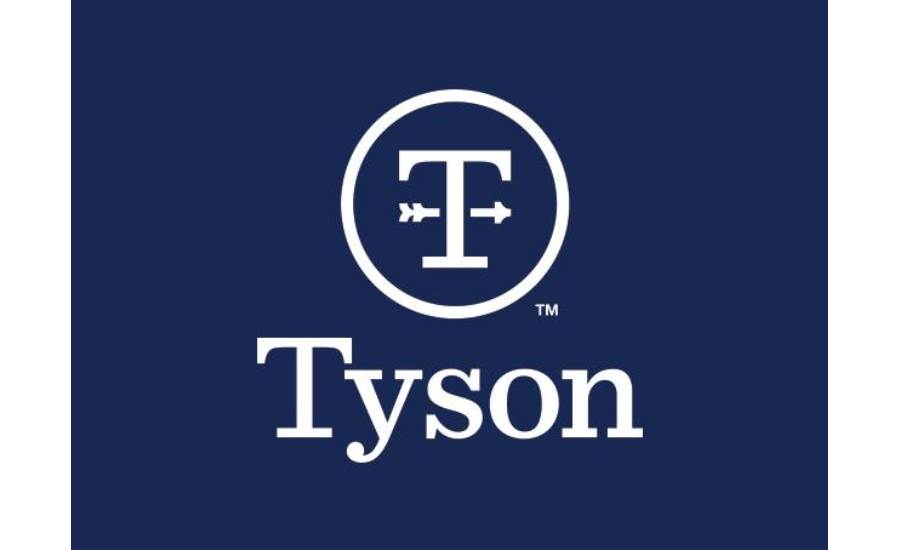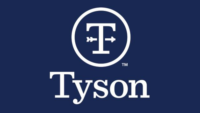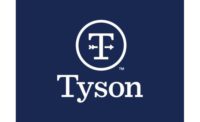Tyson Foods reports second quarter 2021 results

Tyson Foods Inc. has reported the following results for its second quarter. Tyson reported Q2 2021 sales of $11,300 billion, an increase from 2020’s results of $10,888. The company’s results for the first six months of 2021 were $21,760, an increase from $21,703 from 2020.
“We’re grateful for our team members’ continuing efforts and resilience, and for the collaboration and support we’ve received from our customers as we navigate these challenging times,” said Tyson Foods President and CEO Dean Banks. “We delivered a very strong performance in a complex operating environment with continued success in retail and improvements in foodservice as the industry is recovering. We generated adjusted operating income growth of 32 percent for the first half of fiscal 2021, driven by solid results in Beef and Prepared Foods.
“We’re seeing substantial inflation across our supply chain, which will likely create margin pressure during the back half of the year,” he added. “We will remain focused on the factors we can control and will continue to work diligently for a full recovery of our Chicken business, while delivering strong results in other areas of our company. Our long-term outlook is bright as global protein consumption continues to grow, and we expect our investments in capacity expansion, product innovation and technology to create sustainable shareholder value.”
Tyson reported that it incurred direct incremental expenses associated with the impact of COVID-19 totaling approximately $95 million and $215 million for the second quarter and first six months of fiscal 2021, respectively. These direct incremental expenses primarily included team member costs associated with worker health and availability including direct costs for personal protection equipment, production facility sanitization, COVID-19 testing, donations, product downgrades, rendered product and certain professional fees, partially offset by CARES Act credits.
Sales volume in Tyson’s Beef segment decreased during the second quarter of fiscal 2021 due to a reduction in live cattle processed partially associated with the impacts of severe winter weather and a challenging labor environment. Sales volume was relatively flat for the first six months of fiscal 2021 as the impacts in the second quarter were partially offset by strong domestic and export demand as well as the prior year impact of a fire which caused the temporary closure of a production facility for the majority of the first quarter of fiscal 2020. Average sales price increased in the second quarter and first six months of fiscal 2021 as demand for our beef products remained strong. Operating income increased in the second quarter and first six months of fiscal 2021 due to strong demand as we continued to optimize revenues relative to live cattle supply, partially offset by production inefficiencies and direct incremental expenses related to COVID-19. Additionally, operating income was impacted by approximately $60 million and $50 million of incremental net derivative gains in the second quarter and first six months of fiscal 2021, respectively, as compared to the second quarter and first six months of fiscal 2020. Further, operating income in the first six months of fiscal 2021 was impacted by a cattle supplier's misappropriation of Company funds, which resulted in a $55 million gain related to the recovery of cattle inventory as compared to a $54 million loss recognized in the first six months of fiscal 2020.
Pork sales volume decreased during the second quarter and first six months of fiscal 2021 due to a reduction in live hogs processed primarily associated with severe winter weather, which was partially offset by strong demand. Average sales price increased in the second quarter and first six months of fiscal 2021 due to strong demand. Operating income decreased in the second quarter and first six months of fiscal 2021 primarily due to production inefficiencies and direct incremental expenses related to COVID-19. Additionally, operating income in the second quarter and first six months of fiscal 2021 was impacted by approximately $50 million and $70 million, respectively, of incremental net derivative losses as compared to the second quarter and first six months of fiscal 2020.
Chicken sales volume decreased during the second quarter and first six months of fiscal 2021 due to lower production throughput associated with COVID-19, disruptions due to severe winter weather, decline in hatch rate and a challenging labor environment. Average sales price increased in the second quarter and first six months of fiscal 2021 due to favorable sales mix and overall market conditions. Operating income decreased in the second quarter and first six months of fiscal 2021 primarily due to a $320 million loss from the recognition of a legal contingency accrual in the first quarter as well as $125 million and $140 million of higher feed ingredient costs in the second quarter and first six months of fiscal 2021, respectively. Operating income was further impacted in the second quarter and first six months of fiscal 2021 by production inefficiencies and direct incremental expenses related to COVID-19 and disruptions due to severe winter weather. Additionally, operating income in the second quarter and first six months of fiscal 2021 was impacted by $40 million and $110 million, respectively, of incremental net derivative gains as compared to the second quarter and first six months of fiscal 2020.
Sales volume for the Prepared Foods segment decreased during the second quarter and first six months of fiscal 2021 as growth in volume across the retail channel was offset by a reduction in the foodservice channel related to lower demand from the impact of COVID-19. Additionally, sales volume decreased during the second quarter and first six months of fiscal 2021 due to lower production throughput partially associated with a challenging labor and supply environment and the impact of severe winter weather. Average sales price increased in the second quarter and first six months of fiscal 2021 due to favorable product mix and the pass through of increased raw material costs. Operating income increased in the second quarter and first six months of fiscal 2021 due to lower commercial spend and favorable product mix partially offset by increased operating costs, including a $105 million increase in raw material costs during the first six months of fiscal 2021, as well as production inefficiencies due in part to the impact of a challenging labor and supply environment along with the impact of severe winter weather. Additionally, operating income in the second quarter and first six months of fiscal 2021 was impacted by $35 million and $45 million, respectively, of incremental net derivative gains as compared to the second quarter and first six months of fiscal 2020.
Source: Tyson Foods Inc.
Looking for a reprint of this article?
From high-res PDFs to custom plaques, order your copy today!









